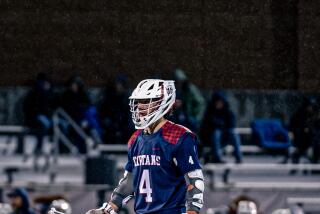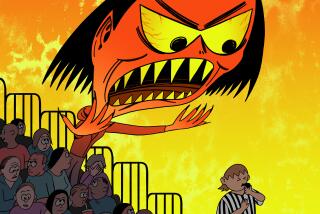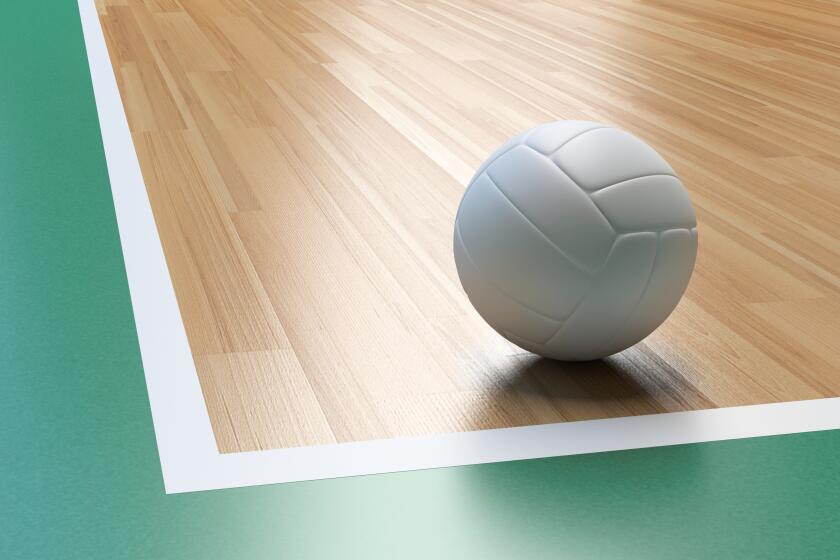Late hit in lacrosse causes parent to suggest rule changes
Lots of parents have viewed lacrosse as a safe alternative to playing football, but it remains a contact sport.
In fact, Max Schneider, a lacrosse player from Santa Ana Mater Dei, broke his collarbone and was unconscious for a brief period after a late hit last month.
That experience has caused his father, Greg, to question the rules and whether athletes are being adequately protected from late hits because the only penalty assessed was a three-minute penalty. There was no ejection.
Schneider, who said he has been involved in lacrosse as a player, coach and administrator, has come up with some suggestions that he believes can help provide safer play in high school lacrosse:
-- Body check to the head results in a three-minute, non-releasable penalty. Defined as any portion of hands, arms, shoulder or helmet impacting other player’s head and neck.
-- Flagrant check to the head results in a three-minute, non-releasable penalty, ejection and minimum one game suspension. Definition of check to the head would include the description above, but expended to include excessive stick checks to the head and neck. There would be an element of judgment to this call, but certainly exacerbating factors would include late hits (ball released and/or whistle blown), hits on defenseless players (fully extended in catch or release, blind side hits) and any hit delivered with sufficient force to render a player unconscious. No judgment needed in those cases.
--All hits falling into the categories above (plus other unnecessary roughness fouls) should be reported and tracked. Every third offense results in a one game suspension.
Lacrosse in the Southern Section does not have enough teams to hold a section-sponsored championship, but the sport continues to grow, and one parent’s safety concerns deserve to be addressed.
eric.sondheimer@latimes.com
More to Read
Get our high school sports newsletter
Prep Rally is devoted to the SoCal high school sports experience, bringing you scores, stories and a behind-the-scenes look at what makes prep sports so popular.
You may occasionally receive promotional content from the Los Angeles Times.







